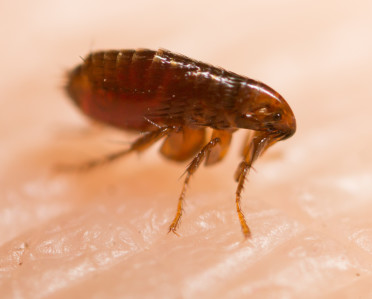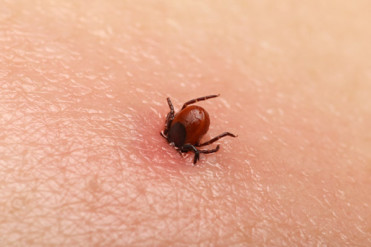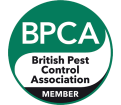
Call 0333 567 2020 for advice and quotes or contact us online
Biting Insect Identification
Biting Insects and Their Identification
Learn about the types of biting insects you are likely to encounter, and how to distinguish between them. This will help you determine if you have a problem with biting insects in your property and whether you need our control treatment service.
 Fleas
Fleas
Fleas are most commonly brought into homes by pets. There are several types of fleas that feed on animals such as dogs, birds, rodents and foxes. The type of flea associated with biting humans is the Cat Flea (Cteneocephalides felis).
Adult fleas are very small insects that are approximately 2mm in size. The insects are flattened and dark red to brown in colour. The body of a flea is adapted to jump at height and can latch onto an animal host.
The complete flea life cycle from egg, larvae to adult flea can be as little as one month in the summer. Fleas lay eggs on pets which often drop off and become hidden in the fibres of your carpet, in-between floorboards and in your pet’s bedding. Once the larva is fully developed into an adult flea it only emerges when it detects vibrations that could be caused by a potential host – a vacuum cleaner can stimulate flea eggs to hatch!
Ticks
Ticks (Family Ixodidae) are not actually insects but are arachnoids. They are occasionally brought into homes by pets and can also be picked up by humans from infested long grass.

Ticks vary in colour depending on the species and can grow up to 10mm in length. Similar to fleas, ticks jump and latch onto the fur of pets and our clothing in hope of finding a blood meal.
Mites
Mites are closely related to ticks and are even smaller in size. Most mites are barely visible being less than 1mm in size. You will find it hard to spot them with the naked eye. Common mite species households have problems with are:
House dust mite: Most homes have dust mites and are not a problem until there is a significant number of them. These mites feed on the dead flakes of skin shed by humans and animals. An infestation of dust mites is the primary cause of allergies in homes, such as asthma and eczema.
Harvest mites: These mites live in long grass infesting animals and can latch onto our clothing. Harvest mites are a seasonal problem during the summer to late autumn. They feed on the blood of cats, dogs and humans. You can have a real itchy problem if these red mites have entered into your home.
Bird mites: If there are birds nesting on your roof or eaves, they can bring additional pests with them. Birds such as pigeons, sparrows and starlings can carry bird mites, which can rapidly grow in population and spread into your home.
If you have problems with any of these critters, we’re on hand to help. You can be assured in the knowledge that our solutions are the most efficient way to get rid of any biting insects.
Author: NBC Environment/Orkin






















